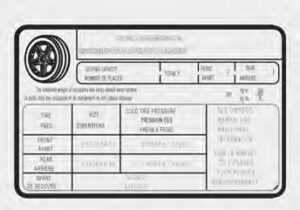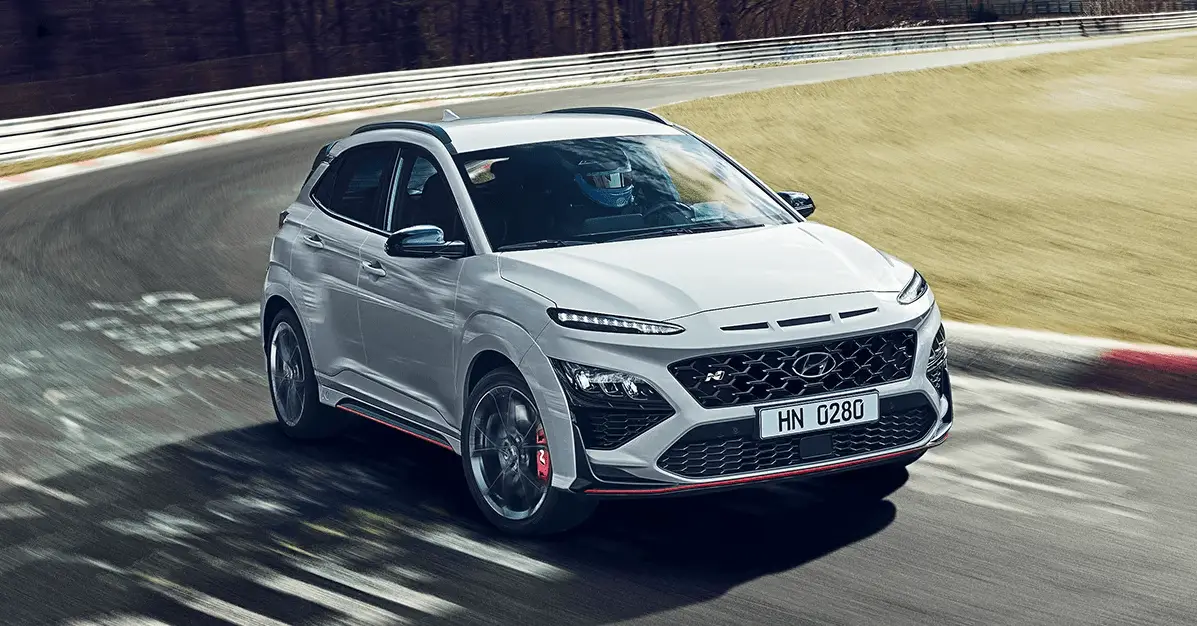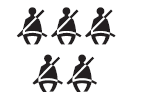Hyundai Kona-N 2023 Vehicle Load Limit and Trailer Towing
The Hyundai Kona-N of 2023 offers a flexible and strong option for people looking for towing capacity. Although the precise weight restrictions and trailer towing capabilities could differ based on the model and setup, the Kona-N is often well-suited for hauling utility loads, boats, trailers, and campers, making it appropriate for both practical and recreational uses. With its towing packages, safety features like trailer sway control, and selection of receiver-style hitches, the Kona-N provides a dependable and adaptable towing experience that lets drivers take on practical hauling tasks or go on excursions with confidence. It’s critical to follow the vehicle’s suggested load limits and towing instructions for a hassle-free towing experience in order to maximize safety and performance.
2023 Hyundai KONA Specs, Price, Features, Milage (Brochure)
VEHICLE LOAD LIMIT
Two labels on your driver’s door sill show how much weight your vehicle was designed to carry: the Tire and Loading Information Label and the Certification Label. Before loading your vehicle, familiarize yourself with the following terms for determining your vehicle’s weight ratings, from the vehicle’s specifications and the Certification Label:
Base Curb Weight
This is the weight of the vehicle including all standard equipment. It does not include passengers, cargo, or optional equipment.
Vehicle Curb Weight
This is the weight of your new vehicle when you pick it up from your dealer plus any aftermarket equipment.
Cargo Weight
This figure includes all weight added to the Base Curb Weight, including cargo and optional equipment.
GAW (Gross Axle Weight)
This is the total weight placed on each axle (front and rear) – including vehicle curb weight and all payload.
GAWR (Gross Axle Weight Rating)
This is the maximum allowable weight that can be carried by a single axle (front or rear). These numbers are shown on the Certification Label. The total load on each axle must never exceed its GAWR.
GVW (Gross Vehicle Weight)
This is the Base Curb Weight plus actual Cargo Weight plus passengers.
GVWR (Gross Vehicle Weight Rating)
This is the maximum allowable weight of the fully-loaded vehicle (including all options, equipment, passengers, and cargo). The GVWR is shown on the Certification Label located on the driver’s door sill.
Overloading
The Gross Axle Weight Rating (GAWR) and the Gross Vehicle Weight Rating (GVWR) for your vehicle are on the Certification Label attached to the driver’s (or front passenger’s) door. Exceeding these ratings can cause an accident or vehicle damage. You can calculate the weight of your load by weighing the items (and people) before putting them in the vehicle. Be careful not to overload your vehicle.
The Loading Information Label

The label located on the driver’s door sill gives the original tire size, cold tire pressures recommended for your vehicle, the number of people that can be in your vehicle, and vehicle capacity weight.
Vehicle capacity weight
5 persons: 860 lbs. (390 kg) Vehicle capacity weight is the maximum combined weight of occupants and cargo. If your vehicle is equipped with a trailer, the combined weight includes the tongue load.
Seating capacity
Total: 5 persons (Front seat: 2 persons, Rear seat : 3 persons) Seating capacity is the maximum number of occupants including a driver, your vehicle may carry. However, the seating capacity may be reduced based upon the weight of all of the occupants, and the weight of the cargo being carried or towed. Do not overload the vehicle as there is a limit to the total weight, or load limit including occupants and cargo, the vehicle can carry.
Towing capacity
We do not recommend using this vehicle for trailer towing.
Cargo capacity
The cargo capacity of your vehicle will increase or decrease depending on the weight the number of occupants and the tongue load if your vehicle is equipped with a trailer.
Steps for determining the correct load limit
- Locate the statement “The combined weight of occupants and cargo should never exceed XXX kg or XXX lbs.” on your vehicle’s placard.
- Determine the combined weight of the driver and passengers that will be riding in your vehicle.
- Subtract the combined weight of the driver and passengers from XXX kg or XXX lbs.
- The resulting figure equals the available amount of cargo and luggage load capacity. For example, if the “XXX” amount equals 1400 lbs. and there will be five 150 lb passengers in your vehicle, the amount of available cargo and luggage load capacity is 650 lbs. (1400 – 750 (5 x 150) = 650 lbs.)
- Determine the combined weight of luggage and cargo being loaded on the vehicle. That weight may not safely exceed the available cargo and luggage load capacity calculated in Step 4.
- If your vehicle will be towing a trailer, the load from your trailer will be transferred to your vehicle. Consult this manual to determine how this reduces the available cargo and luggage load capacity of your vehicle.
WARNING
Do not overload the vehicle as there is a limit to the total weight, or load limit, including occupants and cargo, the vehicle can carry. Overloading can shorten the life of the vehicle. If the GVWR or the GAWR is exceeded, parts on the vehicle can be broken, and it can change the handling of your vehicle. These could cause you to lose control and result in an accident.
| Example 1 |  Maximum Load (1400 lbs.) Maximum Load (1400 lbs.)(635 kg) |
ŧ |  Passenger Weight (150 lbs. × 2 = 300 lbs.) Passenger Weight (150 lbs. × 2 = 300 lbs.)(68 kg × 2 = 136 kg) |
+ |
 Cargo Weight (1100 lbs.) Cargo Weight (1100 lbs.)(499 kg) |
| Example 2 |  Maximum Load (1400 lbs.) Maximum Load (1400 lbs.)(635 kg) |
ŧ |
 Passenger Weight (150 lbs. × 5 = 750 lbs.) Passenger Weight (150 lbs. × 5 = 750 lbs.)(68 kg × 5 = 340 kg) |
+ |  Cargo Weight (650 lbs.) Cargo Weight (650 lbs.)(295 kg) |
| Example 3 |  Maximum Load (1400 lbs.) Maximum Load (1400 lbs.)(635 kg) |
ŧ |
|
+ |  Cargo Weight (540 lbs.) Cargo Weight (540 lbs.)(245 kg) |
Certification label The certification label is located on the driver’s door sill at the center pillar and shows the maximum allowable weight of the fully-loaded vehicle. This is called the GVWR (Gross Vehicle Weight Rating). The GVWR includes the weight of the vehicle, all occupants, fuel, and cargo. This label also tells you the maximum weight that can be supported by the front and rear axles, called Gross Axle Weight Rating (GAWR). The total weight of the vehicle, including all occupants, accessories, cargo, and trailer tongue load must not exceed the Gross Vehicle Weight Rating (GVWR) or the Gross Axle Weight Rating (GAWR). To find out the actual loads on your front and rear axles, you need to go to a weigh station and weigh your vehicle. Be sure to spread out your load equally on both sides of the centerline.
The certification label is located on the driver’s door sill at the center pillar and shows the maximum allowable weight of the fully-loaded vehicle. This is called the GVWR (Gross Vehicle Weight Rating). The GVWR includes the weight of the vehicle, all occupants, fuel, and cargo. This label also tells you the maximum weight that can be supported by the front and rear axles, called Gross Axle Weight Rating (GAWR). The total weight of the vehicle, including all occupants, accessories, cargo, and trailer tongue load must not exceed the Gross Vehicle Weight Rating (GVWR) or the Gross Axle Weight Rating (GAWR). To find out the actual loads on your front and rear axles, you need to go to a weigh station and weigh your vehicle. Be sure to spread out your load equally on both sides of the centerline.
Overloading
- Never exceed the GVWR for your vehicle, the GAWR for either the front or rear axle and the vehicle capacity weight. Exceeding these ratings can affect your vehicle’s handling and braking ability, and cause an accident.
- Do not overload your vehicle. Overloading your vehicle can cause heat buildup in your vehicle’s tires and possible tire failure, increased stopping distances, and poor vehicle handling of which may result in a crash.
NOTICE
Overloading your vehicle may cause damage. Repairs would not be covered by your warranty. Do not overload your vehicle.
WARNING
If you carry items inside your vehicle (for example, suitcases, tools, packages, or anything else), they are moving as fast as the vehicle. If you have to stop or turn quickly, or if there is a crash, the items will keep going and can cause an injury if they strike the driver or a passenger.
- Put items in the cargo area of your vehicle. Try to spread the weight evenly.
- Do not stack items like suitcases inside the vehicle above the tops of the seats.
- Do not leave an unsecured child restraint in your vehicle.
- When you carry something inside the vehicle, secure it.
TRAILER TOWING
We do not recommend using this vehicle for trailer towing.
FAQ
The maximum load limit for the 2023 Hyundai Kona-N can vary depending on the specific model and configuration, so it’s important to consult the owner’s manual or check the vehicle’s specifications for precise details.
The towing capacity of the 2023 Hyundai Kona-N can also vary depending on the model and equipment. Refer to the owner’s manual or contact the manufacturer for towing capacity information.
Some models of the 2023 Hyundai Kona-N may offer towing packages or options with enhanced towing capabilities, including trailer hitches and wiring.
Yes, the 2023 Hyundai Kona-N is typically capable of towing trailers for recreational purposes, such as small boats, campers, or utility trailers, within its specified towing capacity.
The recommended trailer weight limit for the Kona-N will depend on the specific model and equipment. Refer to the owner’s manual or consult the manufacturer for guidance.
Some models of the 2023 Hyundai Kona-N may be equipped with trailer sway control to help manage trailer sway and improve towing stability.
The Kona-N may be capable of towing a car dolly or flatbed trailer, but it’s essential to consider the weight of the trailer and its cargo in relation to the vehicle’s towing capacity.
The Kona-N may include safety features like a trailer brake controller, trailer stability assist, and a towing mode to optimize performance while towing.
Depending on the size and weight of the trailer, a weight distribution system may be recommended to ensure proper weight distribution and towing stability. Consult the owner’s manual or a professional for guidance.
The Kona-N’s towing capabilities make it suitable for towing in mountainous terrain, but it’s important to be mindful of the vehicle’s towing capacity and use appropriate equipment for steep grades.
The 2023 Hyundai Kona-N typically features standard trailer lighting connections, including a 4-pin or 7-pin connector, to power lights and signals on the trailer.
While there may not be a specific speed limit for towing with the Kona-N, it’s advisable to drive at a safe and reasonable speed when towing to maintain control and safety.
The Kona-N’s towing capabilities extend to adverse weather conditions, but it’s crucial to exercise caution and adjust driving behavior when towing in rain, snow, or other challenging weather conditions.
Useful Link
View Full User Guide: Hyundai Kona-N 2023 User Guide
Download Manuals: https://owners.hyundaiusa.com/us/en/resources/manuals-warranties.html
2023 Hyundai KONA Specs, Price, Features, Milage (Brochure)



 Passenger Weight (172 lbs. × 5 = 860 lbs.)
Passenger Weight (172 lbs. × 5 = 860 lbs.)